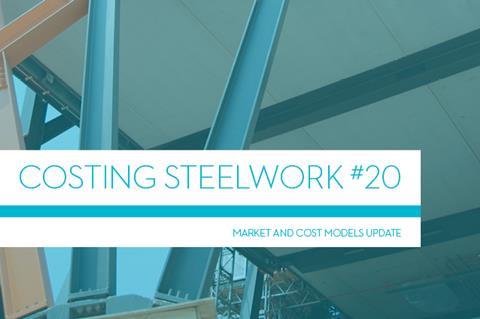- News

All the latest updates on building safety reformRegulations latest
- Focus
- Home
- News
- Focus
- Comment
- Events
- CPD
- Building the Future
- Jobs
- Data
- Subscribe
- Building Boardroom
Costing Steelwork 20: Market update
Sponsored by Steel For Life

A market update from Aecom, BCSA and Steel for Life that provides guidance on costing structural steelwork

Construction sector sentiment continued to record a level at or close to long-run averages over the first quarter of 2022. On the whole, steady workload for most of the industry and a return of more stability in the trading environment through 2021 underpinned much of the balanced view. The effects of the war in Ukraine appear to have not yet unduly influenced construction sentiment during this period, although it is expected that effects will filter into these confidence measures in due course. Despite rising uncertainty, construction activity is expected to hold up over the first half of 2022 and into Q3 as existing workload momentum carries the industry forward. But the lookahead window is shorter now because of greater uncertainty across many economies, resulting from the war in Ukraine, further covid lockdowns in Asia, and domestic pressures on UK household budgets.
Construction new work output increased by 0.1% between January and February 2022, according to the Office for National Statistics’ construction output data release. Similarly, all work output recorded negligible change between the two months. On a year-on-year basis, the change measure is better for new work and all work output, showing rises of 5.7% and 6.1% respectively at February 2022. Reasonable momentum is therefore evident across the industry, at an aggregate level, over the year to Q1 2022.
Read more…
Already registered? Login here
To continue enjoying Building.co.uk, sign up for free guest access
Existing subscriber? LOGIN
Stay at the forefront of thought leadership with news and analysis from award-winning journalists. Enjoy company features, CEO interviews, architectural reviews, technical project know-how and the latest innovations.
- Limited access to building.co.uk
- Breaking industry news as it happens
- Breaking, daily and weekly e-newsletters
Get your free guest access SIGN UP TODAY

Subscribe now for unlimited access
Subscribe to Building today and you will benefit from:
- Unlimited access to all stories including expert analysis and comment from industry leaders
- Our league tables, cost models and economics data
- Our online archive of over 10,000 articles
- Building magazine digital editions
- Building magazine print editions
- Printed/digital supplements
Subscribe now for unlimited access.
View our subscription options and join our community


















